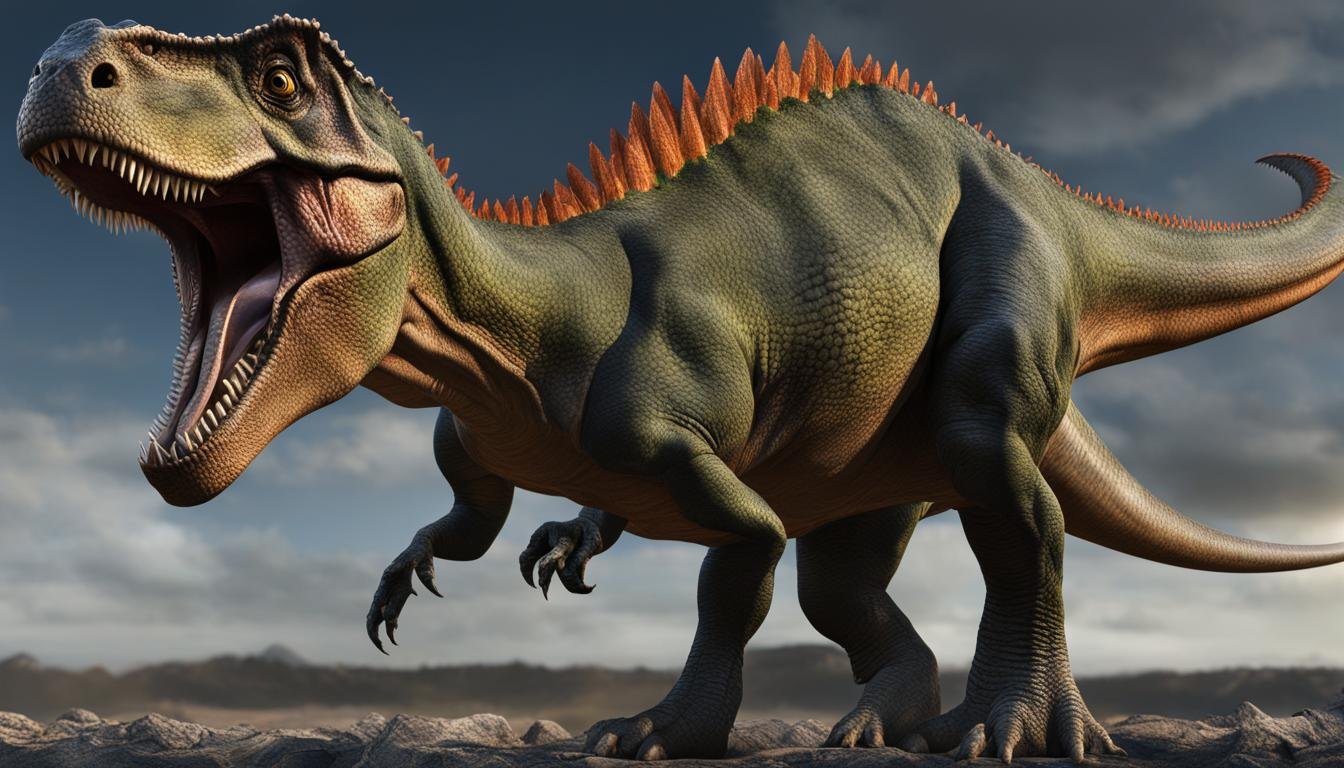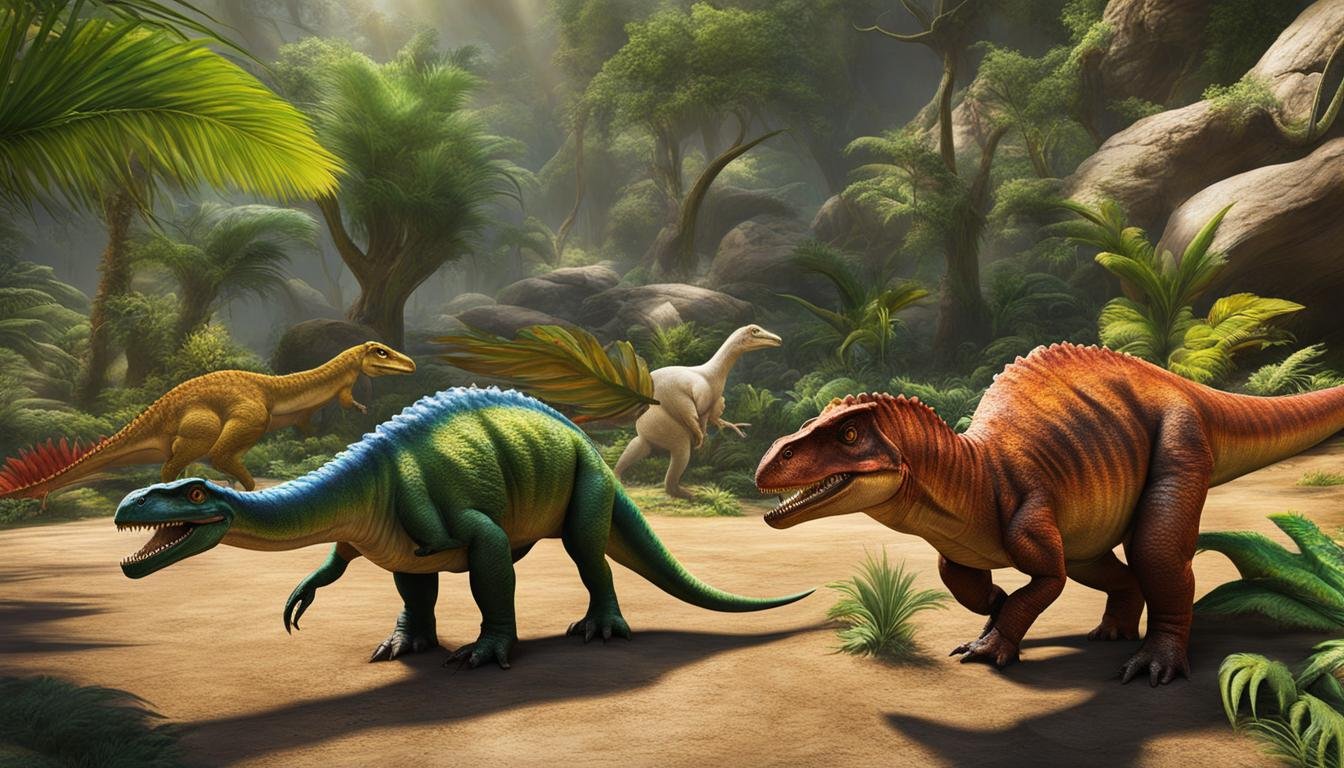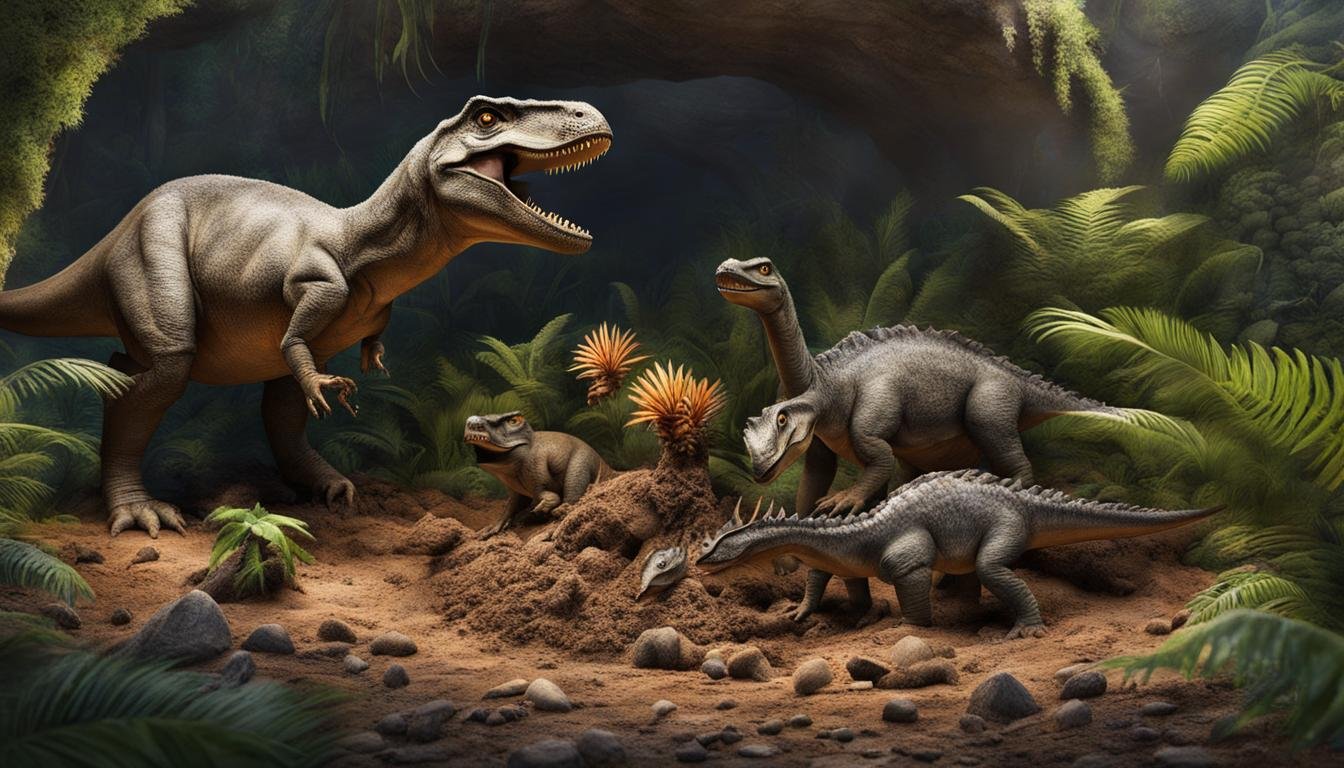Welcome to a fascinating journey into the world of dinosaurs and their reproductive biology. In this article, we will explore the development of dinosaur eggs and the intricacies of embryology in these ancient creatures. From the classification of eggs to the significance of fossilized remains, we will unravel the mysteries surrounding their growth, incubation, and embryonic development.
| Main Point | Description |
|---|---|
| Dinosaur Eggs and Embryology | The study of dinosaur eggs and embryology sheds light on the reproductive biology and evolutionary history of dinosaurs. |
| Parataxonomy in Egg Classification | Parataxonomy of dinosaur eggs assists in understanding their egg-laying behaviors, reproductive physiology, and embryonic development. |
| Comparisons with Modern Eggs | Comparing dinosaur eggs to those of modern birds and crocodilians helps infer aspects of dinosaur reproductive organs and behaviors. |
| Information from Fossilized Eggs and Embryos | Fossilized dinosaur eggs and preserved embryos provide crucial data on growth patterns, species identification, and reproductive strategies. |
| Advancements in Imaging Technology | Modern medical imaging technology has facilitated new discoveries in dinosaur embryology, enriching our knowledge of their skeletal development and physiology. |
The Classification of Dinosaur Eggs
The classification of dinosaur eggs is a crucial aspect of understanding the reproductive biology and evolutionary history of these ancient creatures. Zi-Kui Zhao’s parataxonomic system, developed in 1975, forms the foundation of dinosaur egg classification. This system utilizes various characteristics of the eggshell, such as size, eggshell thickness, surface pore patterns, and ornamentation details, to categorize eggs into family, genus, and species. By analyzing these features, scientists can gain insights into the structure of the eggshell and infer the evolutionary relationships between different species.
The parataxonomic system also includes categories based on the shape of the egg, distinguishing between Spherulitic (small round bodies), Prismatic (prism-shaped), and Ornithoid (bird-like) eggshells. This classification approach provides valuable information about the functional divergence and evolutionary history of related species. To further understand and compare dinosaur eggshell characteristics, researchers often study extant avian and crocodilian eggs, which are the closest living relatives to dinosaurs. By examining the shared microscopic features of the eggshell, scientists can hypothesize about the reproductive organs and behaviors of dinosaurs based on evolutionary relationships.
In summary, dinosaur egg classification using Zi-Kui Zhao’s parataxonomic system offers a systematic and scientific approach to studying these ancient reproductive structures. By analyzing eggshell characteristics and comparing them with avian and crocodilian eggs, scientists gain insights into the reproductive behaviors, evolutionary relationships, and functional divergence between dinosaur species.
Eggshell Classification Categories
| Eggshell Category | Description |
|---|---|
| Spherulitic | Small round bodies |
| Prismatic | Prism-shaped |
| Ornithoid | Bird-like |
The Significance of Fossilized Dinosaur Eggs
Fossilized dinosaur eggs play a crucial role in unraveling the mysteries of dinosaur embryology and providing valuable insights into these ancient creatures’ reproductive biology. The discovery of preserved embryos within these eggs has opened up a world of knowledge about embryonic development, growth patterns, and species identification. By studying the intact skeletons of fossilized embryos, paleontologists can gain a deeper understanding of the early stages of dinosaur life and discern the anatomical differences between young and mature dinosaurs.
The examination of fossilized eggs also offers a unique glimpse into the reproductive behavior of dinosaurs. Nest construction and incubation methods can be inferred by analyzing nest structures and the presence of pore density in eggshells. These findings shed light on the nurturing behaviors of dinosaurs and provide important insights into their reproductive strategies. Furthermore, fossilized eggs reveal vital information about the developmental stages of dinosaurs at hatching, including their ability to move and survive independently.
By studying fossilized dinosaur eggs, scientists can unlock the secrets of embryonic development, growth patterns, and species identification, ultimately enhancing our understanding of these prehistoric creatures’ life cycle and evolutionary history.

The Importance of Preserved Embryos
Preserved embryos found within fossilized dinosaur eggs are invaluable in studying the embryonic development of dinosaurs. The intact skeletons of these embryos provide direct evidence of the growth patterns and skeletal structures of different dinosaur species. This information allows scientists to distinguish between various dinosaur species and avoid misidentifications and speculative species designations.
Comparing the preserved embryos with mature dinosaur skeletons enables researchers to understand the anatomical transformations that occurred during the development of these ancient creatures. These comparisons help uncover the physiological characteristics and growth trajectories of dinosaurs, painting a more complete picture of their life cycle.
Advancing Species Identification
Fossilized dinosaur eggs and their preserved embryos aid in species identification and classification. The study of these ancient reproductive structures provides essential evidence that supplements existing fossil records. By analyzing the morphology and skeletal features of the preserved embryo skeletons, paleontologists can establish distinctive characteristics for each species.
This species identification is vital for accurately reconstructing the diversity and distribution of different dinosaur species and understanding the complex ecosystems they inhabited. The study of fossilized dinosaur eggs and preserved embryos is therefore a critical aspect of paleontology and contributes significantly to our knowledge of these fascinating creatures that once roamed the Earth.
New Discoveries in Dinosaur Embryology
Recent advancements in medical imaging technology have opened up exciting new possibilities for studying dinosaur embryology. By utilizing X-ray examinations and computerized axial tomography (CAT scanning), scientists have been able to identify and analyze fossilized embryo skeletons within dinosaur eggs. These advancements have provided unprecedented insights into the embryonic development, growth patterns, and skeletal structures of these ancient creatures.
One remarkable discovery took place in Montana, where researchers found 19 fossilized embryo skeletons from a previously unnamed type of dinosaur. In addition, fragments of seven embryos from another species were also recovered. These findings have allowed paleontologists to study the early development of dinosaurs and gain a deeper understanding of their physiology and growth.
“The use of advanced imaging techniques has revolutionized our understanding of dinosaur embryology,” says Dr. Sarah Reynolds, a paleontologist from the University of Montana. “Being able to examine intact embryos in such detail has provided invaluable information about the early stages of dinosaur development and how these ancient creatures grew and evolved.”
Table: Comparison of Fossilized Embryo Skeletons
| Dinosaur Species | Number of Embryos | Growth Patterns | Skeletal Development |
|---|---|---|---|
| Species A | 19 | Rapid growth in later stages | Complete skeletal structures |
| Species B | 7 (fragments) | Varied growth patterns | Partial skeletal structures |
The examination of these fossilized embryo skeletons has also allowed scientists to compare the growth patterns and skeletal development of different dinosaur species. The findings from the Montana and Utah discoveries, combined with previous research, have provided valuable data for understanding the diversity and evolution of dinosaurs during the Mesozoic Era. These advancements in dinosaur embryology contribute to our broader knowledge of prehistoric life and offer a glimpse into the fascinating world of these ancient creatures.

Conclusion
The study of dinosaur embryology has been a significant field of research, leading to numerous paleontological discoveries that shed light on the life cycle and reproductive biology of these fascinating creatures. Through the classification of dinosaur eggs using Zi-Kui Zhao’s parataxonomic system, scientists have gained a scientific framework for understanding eggshell characteristics and dinosaur reproductive behaviors.
Fossilized dinosaur eggs and preserved embryos have played a crucial role in identifying growth patterns, distinguishing between young and mature dinosaurs, and clarifying species identification. These paleontological discoveries have provided valuable insights into the early development, behavior, and physiology of dinosaurs, contributing to our understanding of their evolutionary history.
Moreover, advancements in imaging techniques, such as X-ray examinations and CAT scanning, have allowed scientists to study intact embryo skeletons within fossilized eggs. These cutting-edge technologies have yielded new information about skeletal development, growth patterns, and the physiology of dinosaurs at different stages of their embryonic development.
Overall, the ongoing research in dinosaur embryology promises to unveil even more intriguing details about these ancient creatures. By delving deeper into their reproductive biology, we can continue to unravel the mysteries surrounding the life cycle of dinosaurs and gain a deeper appreciation for their place in Earth’s history.









